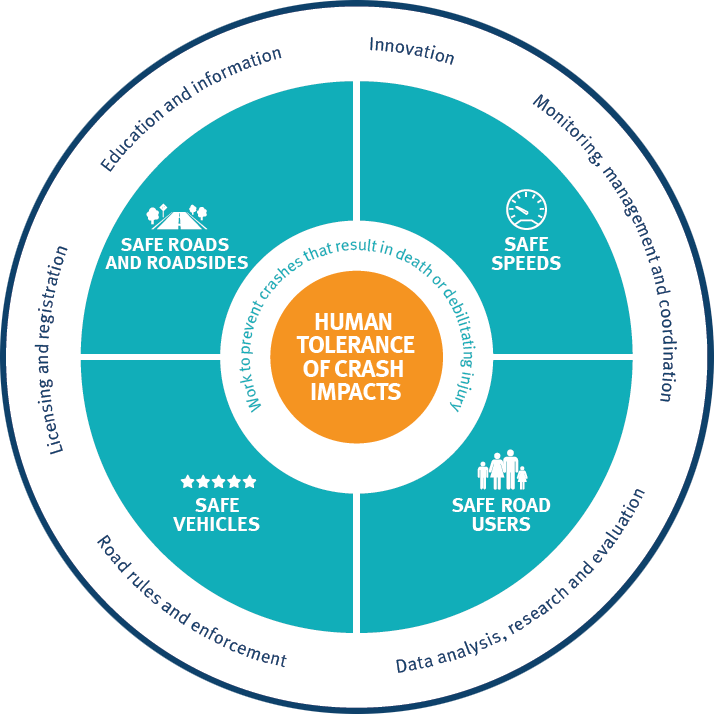Safe System
SS
Safe System
Assuming that people make mistakes, the Safe System advocates a holistic approach based on a variety of multi-level measures to prevent deaths and serious injuries caused by those mistakes, which takes into account human vulnerability.
The Safe System, introduced by the Organisation for Economic Cooperation and Development (OECD) and the International Transport Forum (ITF) in 2008, pursues the same objectives as the 'Vision Zero' defined in 1997 by Sweden, is based on the premise that no one should be killed or seriously injured as a result of a road accident, and starts from the following principles:
People make mistakes that can lead to road crashes
The human body has a limited capacity to resist collisions
Safety is a shared responsibility of those who plan, build, manage and use both roads and vehicles
All elements of the system must be strengthened in combination
The Safe System approach is a key component of the United Nations (UN) 2020 resolution on road safety (derived from the Stockholm Declaration) and is a pillar of European efforts to improve road safety. The European Road Safety Policy Framework 2021-2030 states that “we need to implement the Safe System at EU level“.
The Safe System should be a road system that
absorbs the physical limitations of the human being
is tolerant and self-explanatory
absorbs the driver’s mistakes
Main pillars of the Safe System approach
These pillars should be viewed in an integrated way, so that if one of them fails, another one or others will accommodate this failure to prevent greater damage.
Drivers will always make mistakes, and the infrastructure should help reduce these mistakes and minimise the severity of their consequences. This premise gives rise to the concept of a tolerant road, one that accommodates human error, that takes into account the vulnerability and physical limitations of the human body.
The Safe System takes for granted the inevitability of human error, but also bears in mind that fatalities and serious injuries as a result of a road accident should not be regarded as inevitable, but can be avoided.
Everyone has the right to use the roads without the risk of being involved in a road crash that could result in a serious or fatal injury; nobody should pay for a driving mistake with their life.

The Safe System approach is fundamentally different from the traditional approach, which placed the focus on the human factor and its behaviour. The Safe System, without removing responsibility from the driver, places the focus on the other two actors in the system: the vehicle and the infrastructure. In addition to efforts in education, awareness campaigns and enforcement, good transport management and planning, and safe, self-explanatory and tolerant infrastructures should be the major focus for achieving the 'zero' vision of fatalities and serious injuries on the roads.